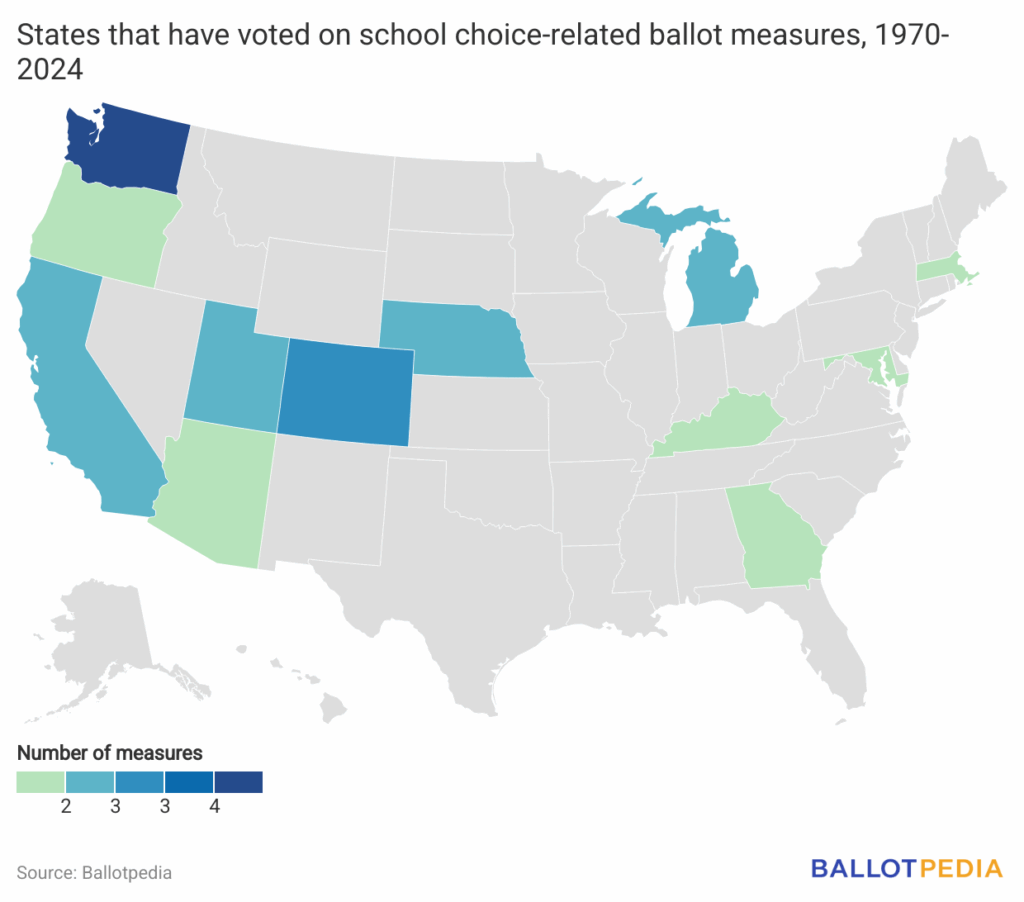One hundred years ago, on June 1, 1925, the U.S. Supreme Court issued a unanimous decision in Pierce v. Society of Sisters, striking down a voter-approved ballot initiative, Oregon Measure Nos. 314-315, which required children to attend public schools. The Court held that "the child is not the mere creature of the State" and "the fundamental theory of liberty upon which all governments of this Union rest excludes any general power of the State to standardize its children by forcing them to accept instruction from public teachers only."
While Pierce did not establish school choice programs, it has been cited in later rulings related to school choice, including Zelman v. Simmons-Harris (2002) and Espinoza v. Montana Department of Revenue (2020). Paul E. Peterson, the Henry Lee Shattuck Professor of Government at Harvard University, said, "Pierce did not launch the school choice movement, but 100 years ago it laid the groundwork to advance" this policy area.
Because the case originated from a ballot measure and remains relevant to school choice jurisprudence, Pierce is a useful starting point for exploring how ballot measures have influenced school choice policy.
Overview of school choice ballot measures
Since 1970, voters in 12 states have decided on 22 statewide ballot measures related to school choice policies, including vouchers, tax credits, education savings accounts (ESAs), and charter schools.
The term school choice refers to policies and programs that allow families to select educational options beyond their assigned public school. Some policies involve public funding for private education or homeschooling through vouchers, education savings accounts (ESAs), or tax credits. Others involve authorizing or expanding public alternatives, such as charter schools or open enrollment. The most common school choice ballot measures have addressed vouchers or similar programs (10, or 45%) and charter schools (six, or 27%). Three addressed tax credits, and one addressed education savings accounts (ESAs). Two addressed other constitutional matters.
Of the 22 statewide ballot measures, two (9.1%) were approved, while the remaining 20 (90.9%) were defeated. Since 1970, there have been more than 8,000 state ballot measures, of which 65% were approved. For citizen-initiated ballot measures, about 45% have been approved since 1970. The two school choice ballot measures that were approved, Georgia Amendment 1 and Washington Initiative 1240, were both on the ballot in 2012 and both concerned charter schools.
While around 22% of state ballot measures since 1970 were citizen-initiated, 19 or 22 (86%) of school choice ballot measures were initiated state statutes, initiated constitutional amendments, or veto referendums.

History of school choice ballot measures
Some of the earliest school choice-related ballot measures, in the 1950s and 1960s, were introduced in response to school desegregation and Brown v. Board of Education. Beyond their historical and political context, these measures differed from later school choice-related ballot initiatives in several ways: (1) some sought to authorize the elimination of public schools, at least at the local level; (2) state legislatures referred them to the ballot; and (3) voters approved them. Some proposed tuition grants, similar to the concept of vouchers, such as those in Georgia, North Carolina, and Virginia. The relevance of these ballot measures to modern school choice policies is debated between supporters and opponents. You can read more about these ballot measures here.
In the 1970s, school choice-related ballot measures began to appear that proposed vouchers for private education. Voters rejected these in Nebraska, Maryland, and Michigan. In 1970, voters in Michigan approved Proposal 3, which prohibited vouchers in the state constitution.
In the late 1980s and 1990s, voucher proposals continued to be the most common type of school choice-related ballot measures. However, education tax credits were on the ballot in Utah, Oregon, and Colorado. There was also the first state ballot measure related to charter schools—Washington Initiative 177.
In the 2000s, ballot measures regarding charter schools became more common. Of the five ballot measures, three (60%) addressed vouchers and two (40%) addressed charter schools.
In the 2010s, three of four (75%) ballot measures addressed charter schools, while the fourth introduced a new topic for school choice measures: education savings accounts (ESAs). Since 1970, the only school choice ballot measures approved by voters were two measures (Georgia Amendment 1 and Washington Initiative 1240) in 2012, both of which authorized charter schools.
In the 2020s, three school choice-related ballot measures have appeared on state ballots. In 2024, three statewide ballot measures related to school choice appeared on the ballot in Colorado, Kentucky, and Nebraska—the most in a single year since 2000. Voters rejected the ballot measures.
As of May 30, no school choice-related ballot measures have qualified for the ballot in either 2025 or 2026.
Most school choice policies are enacted through the state legislative process rather than through ballot measures. In 2025, for example, Idaho, Indiana, North Dakota, Tennessee, Texas, and Wyoming passed laws authorizing or expanding school choice programs. A list of changes to school choice programs across the United States in 2025 is available here.

Additional reading:


